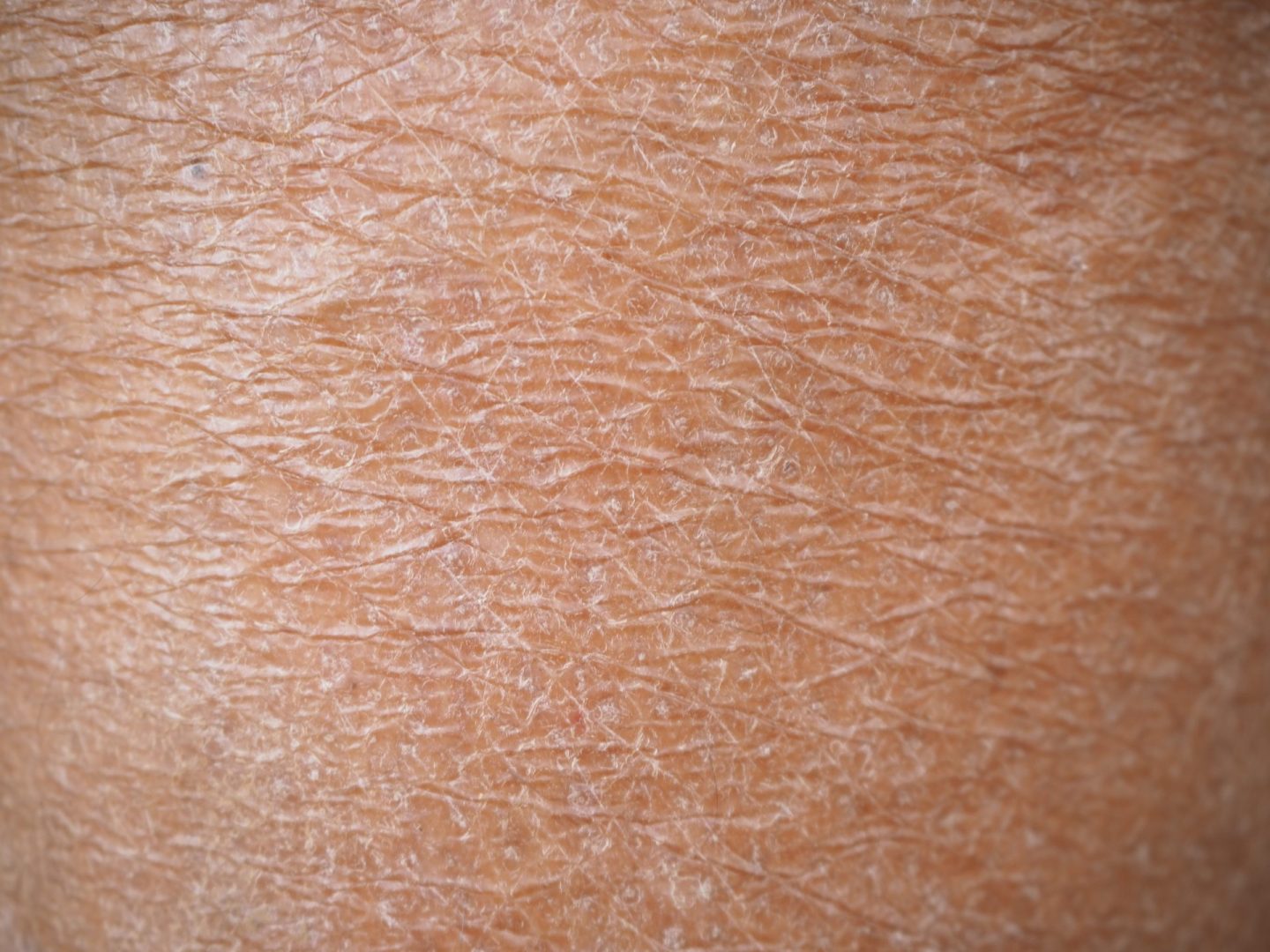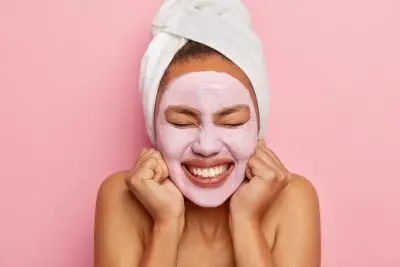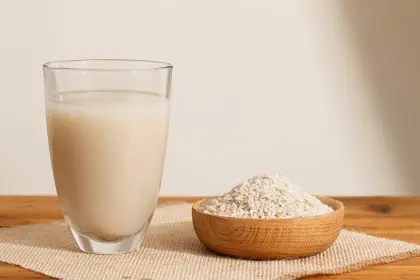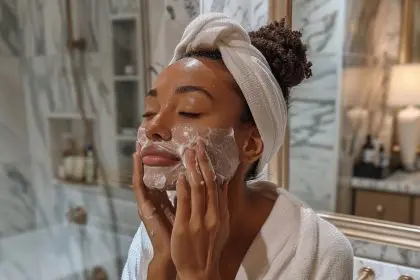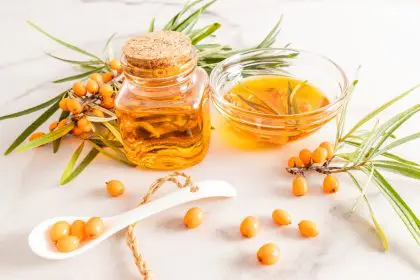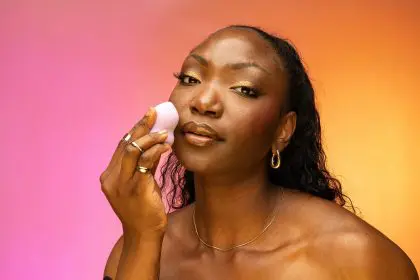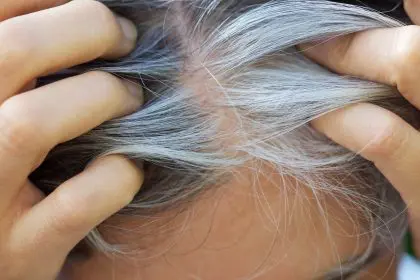The mirror reflected back skin that looked like parchment paper—dry, flaky, and uncomfortable no matter how much expensive moisturizer I slathered on. Every morning brought the same frustrating routine of applying layers of products that seemed to disappear within hours, leaving behind the same tight, irritated feeling.
For years, I assumed dry skin was just my genetic fate, something I’d inherited and would have to manage forever with increasingly expensive creams and treatments. The beauty industry certainly reinforced this belief, offering endless products promising to fix what felt like an unfixable problem.
The breakthrough came not from adding more products to my routine, but from recognizing that several everyday habits were actively sabotaging my skin’s natural ability to stay hydrated and healthy. Once I identified and eliminated these skin-damaging behaviors, the transformation happened faster than I ever imagined possible.
The hidden saboteurs destroying your skin barrier
Most people unknowingly engage in daily habits that strip away the skin’s protective barrier, creating a cycle where no amount of moisturizer can restore proper hydration levels. These behaviors often feel beneficial or harmless, making them particularly insidious.
The skin barrier functions like a protective shield, keeping moisture in while blocking irritants out. When this barrier becomes compromised through damaging habits, it loses its ability to retain water effectively, leading to chronic dryness regardless of product application.
Understanding which activities compromise skin barrier function empowers you to make targeted changes that allow your skin’s natural healing mechanisms to restore optimal hydration levels. This approach addresses root causes rather than just symptoms.
The scorching hot shower mistake
- I stopped taking burning hot showers that stripped my skin’s natural oils. Those luxurious, steamy showers that felt so relaxing were actually dissolving the lipid layer that keeps skin hydrated and protected from environmental damage.
Hot water acts like a powerful degreasing agent, removing not only dirt and sweat but also the essential oils that maintain skin barrier integrity. This stripping effect becomes more pronounced with longer shower duration and higher water temperatures.
The transition to lukewarm water felt uncomfortable initially, but the skin benefits became apparent within days. Cooler water cleanses effectively while preserving natural protective oils that keep skin supple and moisturized throughout the day.
Limiting shower time to 5-10 minutes prevents excessive exposure to water that can paradoxically lead to dehydration. Even lukewarm water can strip skin oils when exposure becomes prolonged.
The over-cleansing obsession
- I stopped washing my face multiple times daily with harsh cleansers. The belief that more cleansing equals cleaner, healthier skin had led to over-washing that destroyed my skin’s natural pH balance and protective barriers.
Morning and evening cleansing with gentle, pH-balanced products provides adequate cleaning without compromising skin health. Additional washing throughout the day strips away beneficial oils and disrupts the skin’s natural renewal processes.
Harsh cleansers containing sulfates, alcohol, or strong acids can damage skin even with single daily use. These ingredients remove far more than necessary, leaving skin vulnerable to moisture loss and environmental irritants.
The switch to gentle, cream-based cleansers that don’t foam dramatically changed how my skin felt after cleansing. Instead of tight and squeaky-clean, skin felt soft and comfortable, indicating preserved natural moisture.
The aggressive exfoliation trap
- I stopped daily exfoliation with rough scrubs and abrasive tools. The pursuit of smooth skin through aggressive scrubbing was actually creating micro-tears and inflammation that prevented proper skin barrier function.
Physical exfoliants like harsh scrubs, rough washcloths, and stiff brushes can damage healthy skin cells along with dead ones. This trauma triggers inflammatory responses that impair the skin’s ability to retain moisture effectively.
Over-exfoliation removes the skin’s protective outer layer faster than it can regenerate, leaving underlying tissues exposed to water loss and environmental damage. This creates a cycle where skin feels rough, prompting more aggressive scrubbing.
Reducing exfoliation to 1-2 times weekly with gentle methods allowed my skin to maintain its protective barrier while still removing dead cells naturally. This balanced approach prevented damage while supporting healthy cell turnover.
The towel trauma routine
- I stopped aggressively rubbing my skin dry with rough towels. The vigorous towel-drying routine that seemed normal was actually creating microscopic damage and removing moisture that skin desperately needed to retain.
Rough terry cloth towels act like sandpaper when used with pressure, disrupting the delicate skin surface and causing invisible irritation. This mechanical trauma compromises barrier function while contributing to inflammation and dryness.
The simple switch to gentle patting motions with soft towels preserved skin integrity while still removing excess water. Leaving skin slightly damp allows moisturizers to trap additional hydration rather than sitting on completely dry surfaces.
High-quality, soft towels make a noticeable difference in skin comfort immediately after bathing. The investment in gentler materials pays dividends in improved skin health and reduced irritation.
The product overload phenomenon
- I stopped layering multiple skincare products with conflicting ingredients. The more-is-better approach to skincare had created a confusing cocktail of chemicals that often cancelled each other out or caused irritation.
Using products containing retinoids, acids, and other active ingredients simultaneously can create chemical interactions that damage skin rather than improve it. These combinations often increase sensitivity while reducing individual product effectiveness.
Mixing products from different brands increases the likelihood of ingredient conflicts since formulations aren’t designed to work together. This shotgun approach often creates more problems than solutions.
Simplifying to a basic routine of gentle cleanser, simple moisturizer, and sunscreen eliminated conflicting ingredients while allowing skin to respond to consistent, compatible formulations. This streamlined approach proved far more effective than complex routines.
The environmental assault ignorance
- I stopped ignoring how environmental factors were damaging my skin daily. Harsh weather, indoor heating, air conditioning, and environmental pollutants were constantly attacking my skin barrier without my awareness.
Dry indoor air from heating and cooling systems sucks moisture directly from skin surfaces. This environmental dehydration happens continuously, overwhelming the skin’s ability to maintain proper hydration levels.
Wind, cold temperatures, and low humidity environments all contribute to increased water loss through the skin. Failing to protect against these environmental stressors allows continuous moisture depletion regardless of product application.
Installing humidifiers, using protective clothing, and being mindful of environmental exposure helped maintain skin hydration levels naturally. These protective measures supported skincare products rather than fighting against environmental damage.
The stress and sleep neglect
- I stopped ignoring how stress and poor sleep were destroying my skin from within. Chronic stress and inadequate rest were undermining my skin’s natural repair mechanisms while increasing inflammation throughout my body.
Stress hormones like cortisol break down collagen and impair skin barrier function, making it impossible to maintain proper hydration regardless of external treatments. This internal damage requires addressing root causes rather than surface symptoms.
Poor sleep quality prevents the natural skin repair processes that occur during deep sleep cycles. Without adequate rest, skin cannot regenerate effectively or maintain optimal barrier function.
Prioritizing stress management through regular exercise, meditation, and adequate sleep created internal conditions that supported healthy skin function. These lifestyle changes proved as important as any topical treatment.
The transformation timeline
Week one brought noticeable improvements in skin comfort and reduced tightness after cleansing. The immediate elimination of harsh practices allowed skin to begin recovering from chronic irritation and damage.
Week two revealed improved skin texture and decreased flaking as the natural barrier began restoring itself. Moisturizers started working more effectively as skin regained its ability to retain hydration.
Week three showed dramatic improvements in overall skin appearance, with increased smoothness and natural radiance. The cumulative effects of eliminating damaging habits allowed natural skin processes to flourish.
By week four, the transformation was complete, with skin that felt consistently comfortable and looked healthy throughout the day. The changes had become sustainable habits that supported long-term skin health.
Building a skin-supporting routine
Morning routines focused on protection rather than aggressive treatment supported skin health throughout the day. Gentle cleansing, simple moisturizing, and sunscreen application provided essential care without damage.
Evening routines emphasized repair and hydration to support overnight skin regeneration. Removing environmental pollutants gently while applying nourishing treatments supported natural healing processes.
Consistency in gentle practices proved more valuable than sporadic use of expensive treatments. Daily habits that supported skin barrier function created lasting improvements that expensive products couldn’t achieve alone.
Understanding your skin’s signals
Learning to recognize when skin feels comfortable versus tight or irritated helped guide daily choices. This body awareness prevented returning to damaging habits that felt normal but were actually harmful.
Tracking skin condition changes in relation to weather, stress levels, and routine modifications revealed personal patterns that informed ongoing care decisions. This self-knowledge enabled proactive adjustments rather than reactive treatments.
Trusting skin’s natural healing abilities rather than constantly intervening with products allowed inherent repair mechanisms to function optimally. This patience and restraint often proved more beneficial than active intervention.
Maintaining long-term skin health
Seasonal adjustments to account for changing environmental conditions maintained skin health year-round. Winter required different protective measures compared to summer, but the underlying gentle approach remained consistent.
Regular evaluation of products and practices ensured that beneficial habits were maintained while potentially harmful new additions were avoided. This ongoing awareness prevented regression to damaging routines.
Understanding that skin health reflects overall health encouraged attention to nutrition, hydration, and lifestyle factors that support skin function from within. This holistic approach created sustainable improvements.
The ripple effects of healthier skin
Improved skin confidence affected other areas of life, from professional interactions to personal relationships. Feeling comfortable in your own skin creates positive psychological effects that extend beyond appearance.
Reduced need for heavy makeup and concealing products simplified daily routines while saving money on cosmetic purchases. Healthy skin requires less coverage and enhancement.
Better sleep quality resulted from reduced skin discomfort and itching that previously disrupted rest. Comfortable skin contributed to overall physical well-being and energy levels.
Creating sustainable skin health habits
The key to lasting results lay in replacing harmful habits with beneficial ones rather than simply eliminating practices without alternatives. This positive substitution approach prevented returning to damaging routines.
Understanding the science behind why certain practices damage skin helped maintain motivation to continue beneficial habits even when old patterns felt tempting. Knowledge created commitment to healthier choices.
Gradual implementation of changes prevented overwhelming lifestyle disruption while allowing time to appreciate each improvement. This measured approach increased the likelihood of permanent habit formation.

